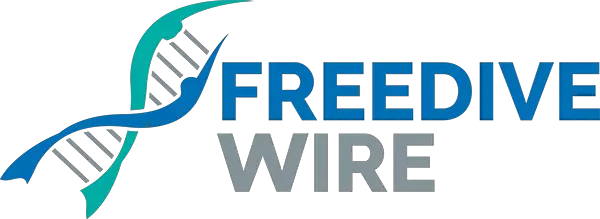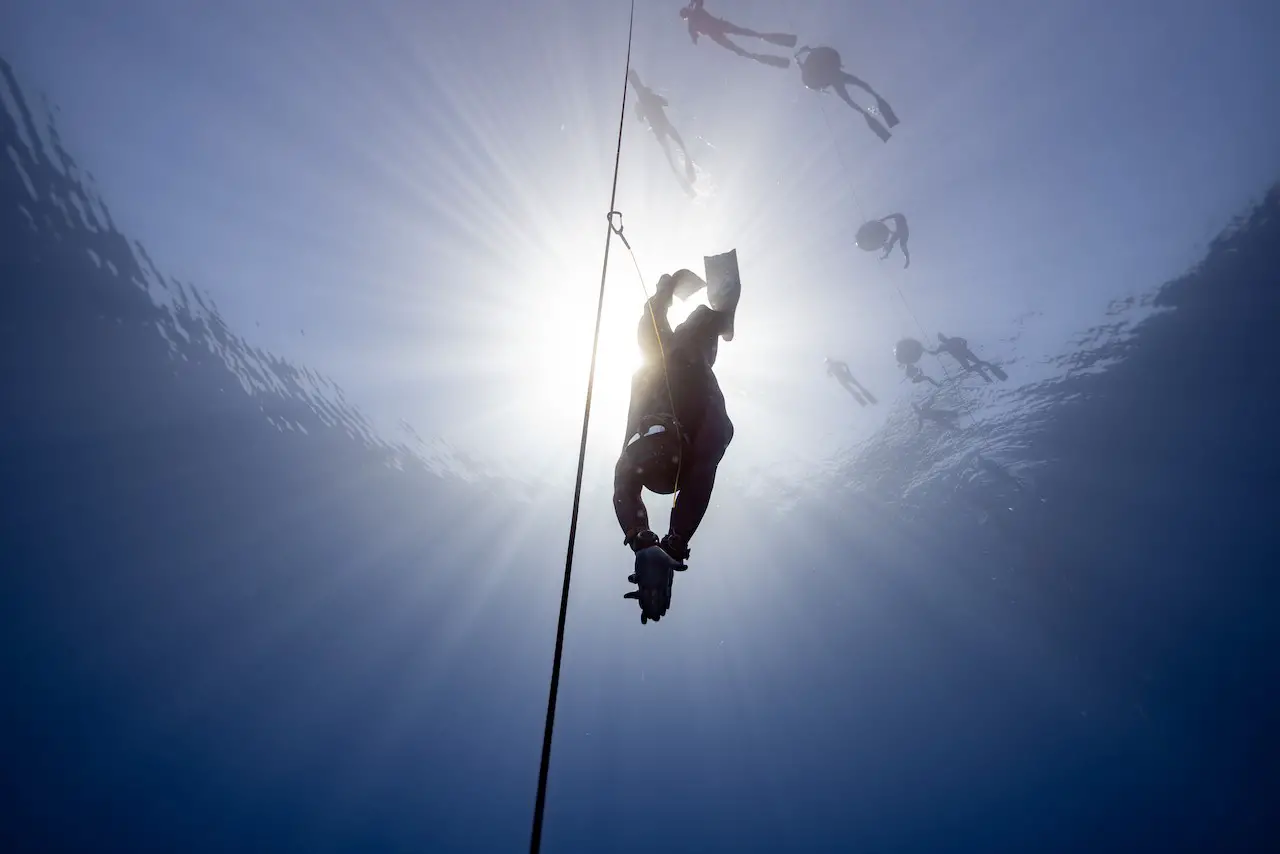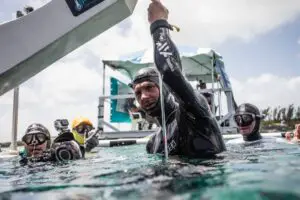Highlights
- I discuss my experience at the Infinity Depth Games in October 2020
- Learn about freediving in Larnaca, Cyprus
- The safe and supportive competition environment
- Calculate your warm-up before Official Top (OT)
- Discover the beauty of Cyprus (and not just freediving)
Reading Time: 9 minutes
The Calm Zone – Perfect Conditions
Surface Conditions & Visibility
I had heard about “The Calm Zone”, and having dived in Dominica and the Philippines, I had some expectations. The waters of Larnaca, Cyprus did not disappoint. Not often does one find such spectacular and calm conditions in the Mediterranean. Freediving in Cyprus is an adventure worth reading about.
Most days saw very calm waters in the morning, with the southerly winds only picking up in the afternoon. Coincidently, this is perfect if you’re into both freediving and wind sports. Having been accustomed to Soufrière, Dominica, the Cypriot waters were gentle and inviting as well.
The visibility is really what shocked me. From the surface, you could see (on the best of days) up to 45 meters (148 feet) straight down into the deep blue sea. This I had never experienced this before. A deep and clear blue abyss. As clear as Canadian glacial lakes in the late fall.
“Infinity Depth Games” earns its name a few times over.
Currents
This is where you roll the dice, as is anywhere else in the world.
At times, the current could pick up within an hour, even cancelling a training session or an event. Mooring in over 200 meters (650 feet) of water is a trade-off. Limitless depth with perfect visibility, but subject to strong currents. However, in my experience, most days saw light currents on the surface, with very mild or no current at depth.
A point of reassurance. The local crew at Infinity Freeding Cyprus and Free2Dive were very knowledgeable about weather conditions. They would take the time to sit down and go over weather patterns, prevailing winds, surface swell and potential current conditions.
It pays off to go freediving with a local crew in Cyprus.
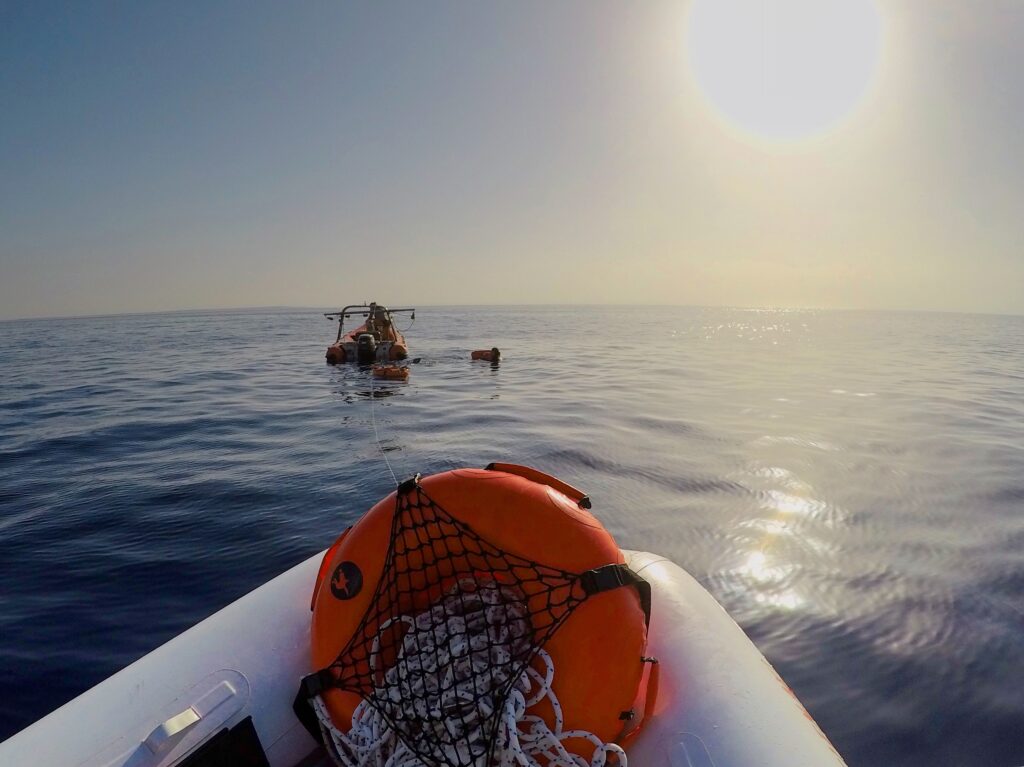
Temperature & Thermoclines
The thermoclines are a funny topic.
In Canada, at times, we have 15 degrees Centigrade (C) or 60 Fahrenheit (F) on the surface and 6 C (40 F) at 20 meters (65 Feet). Thermoclines, and their effect on freedivers, are highly subjective. However, for very deep freedivers, this can have a profound effect.
In Larnaca, the surface water temperature ranged from 25 C to 28 C (77 to 82 F). Quite cozy, I know. However, at 35 – 45 meters (115 feet – 150 feet) you could often feel a layer several degrees cooler. It was common to have about 24 C (75 F) at around 36 meters (118 feet). By 60 meters (200 feet), the bottom camera recorded 19 C (66 F). At 85 meters (280 feet), we saw a temperature of 18 C (64 F).
Still warm for Canadian standards. However, for deep freediving this can have a significant effect on relaxation, homeostasis and equalization.
So plan accordingly, contact the locals regarding conditions beforehand and make sure to bring wetsuits suitable for October in Larnaca, Cyprus.
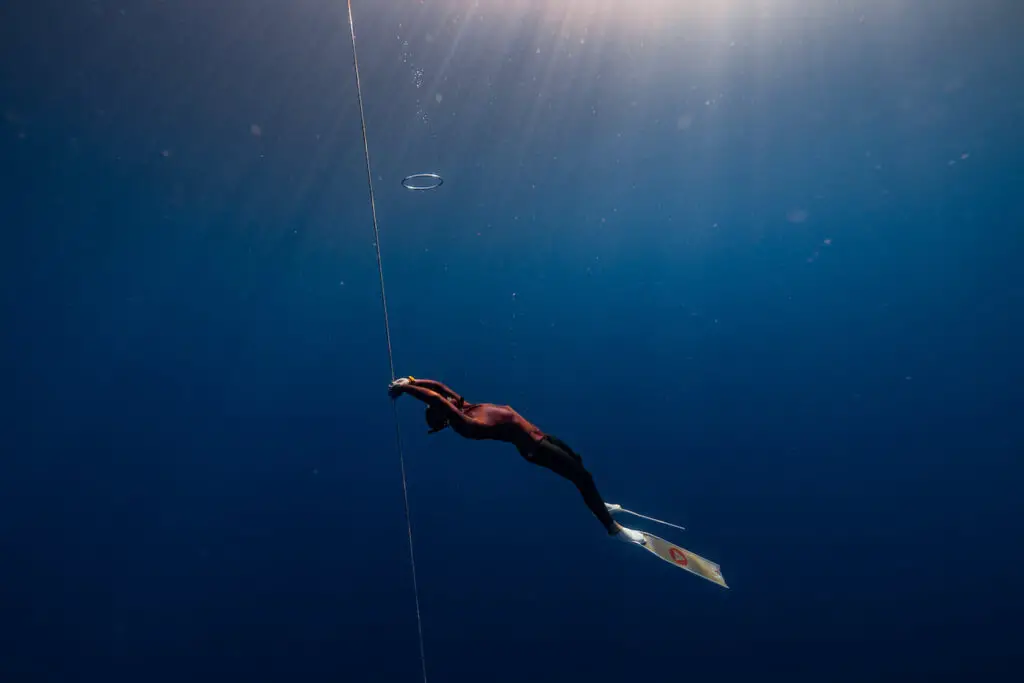
A Safe and Supportive Competition
I have to congratulate Infinity Freediving Cyprus for organizing a safe and meticulous competition during COVID-19. Infinity Depth Games 6 was one of the most professional and well organized competitions I have been to.
Pre-Competition Training
Arriving a few days early, I had the chance to get a few training sessions in. The setup was exactly as it would be on the competition day. Same crew of people, staff, organizers and safety. This was a fantastic way to mentally prepare for the competition.
Three warm-up lines up to 40 meters (130 feet) deep gave athletes plenty of time and space to do their warm-up routine. Professional freedivers can be difficult to cater to. Each of them have their own way of doing things before a dive.
Having this space to prepare yourself was one of my favourite features of the competition. With several deep and resting buoys, you could really fit your routine immediately.
It’s in the Details
The small details are what make a well organized competition stand out. One thing I noticed, and appreciated very much, was the ample amount of Official Top (OT) schedules pasted everywhere. The OT time is the exact time you have to take your last breath and officially do your dive. Missing your OT time would suck big time.
The organizers would, every single day, print and laminate the detailed schedules and place them everywhere. On every boat, buoy and at the marina. This relieves so much stress since you can always double check when you should start your warm-up, move to the competition line and prepare for your dive.
Want to know how I calculated my warm-ups before my Official Top (OT) dive time?
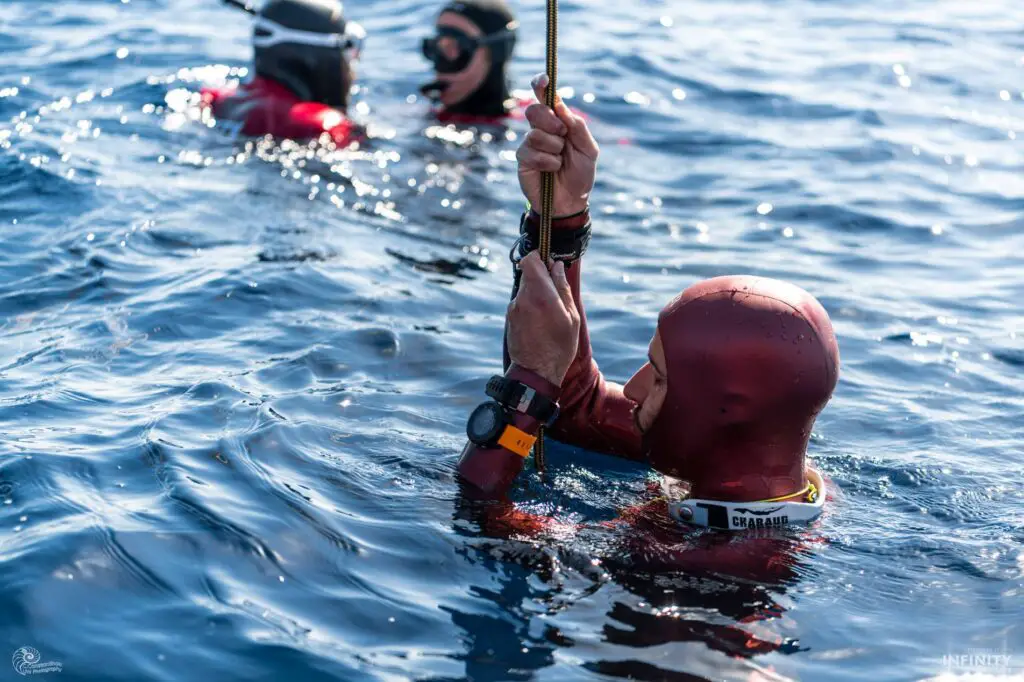
Calculate the Perfect Warm-up
If my OT was at 10:30 AM on a particular morning, this is how I would calculate backwards my timing:
- Take the 9:20 AM boat (10 minute ride)
- Be at the warm-up area no later than 9:30 AM (1 hour before)
- Take 10-15 minutes to relax on the boat and put on my gear
- Get in the water by 9:45 AM, relax for 5 minutes
- Do a 2 minute warm-up hang at 15 meters (50 feet)
- Relax for 5-10 minutes
- Do a 2 minute dive to 40 meters (130 feet)
- This dive would be CWT-B (finning) down and FIM (pulling) up
- Why? Save the legs for your dive!
- Relax from 10:10 AM onwards
- Literally fall asleep for 15-20 minutes
- By 10:25 AM make my way slowly to the competition line
Freedivers at competitions work backwards when calculating their warm-up dives. Many warm-up dives and you get tired. Too few, and your Mammalian Dive Response (MDR) hasn’t kicked in. Jump in the water early, and you might get cold. Too late, and you’ll stress and rush.
It’s an art, and everyone is completely different on how they do this. My buddy and mentor Thibault Guignes does 100 meter (330 feet) dives without any warm-ups. He’s trained for this, and that’s his modus operandi.
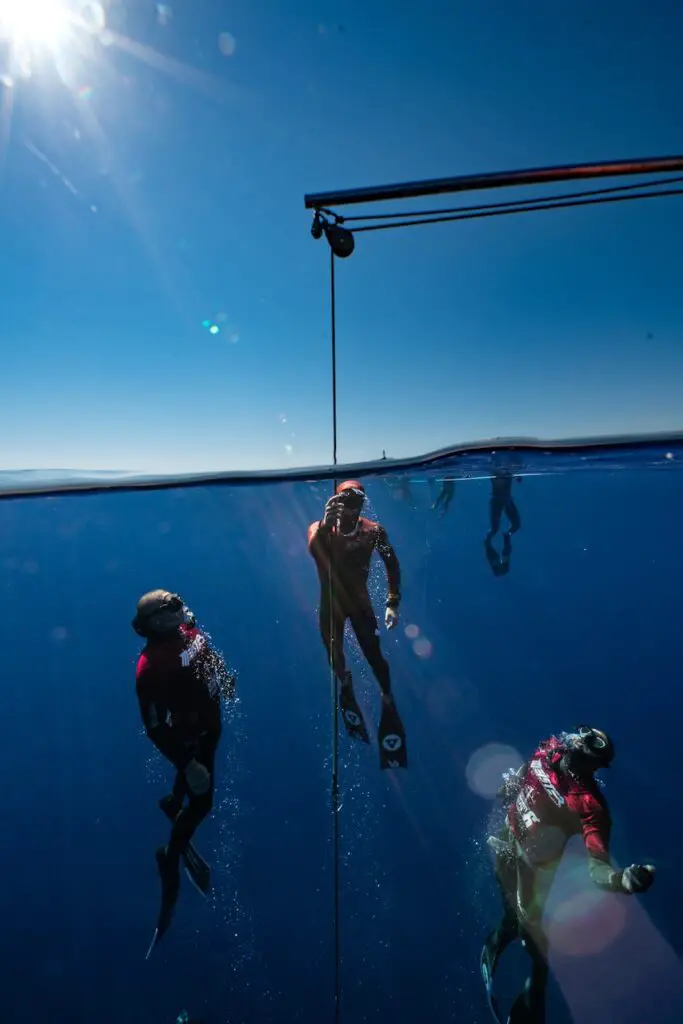
Safety and Medical Team
A final, but very important note on the safety and medical team.
With a “chill-out” boat, four warm-up buoys, a main boat, a medical boat and a transport boat, this competition really made me feel comfortable. I felt calm and at ease like the waters I was immersing myself in.
Infinity Depth Games organizers had a great medical team with nurses and a physician on the medical boat at all times. An ambulance was constantly parked at the marina in case of any accidents. This reassurance is fantastic for your relaxation and mental preparation in competitions.
The safety team comprised of experienced safeties, instructors and spearfishers were under the guidance of Savvas Savva. Savvas has immense experience organizing the top quality safety needed when the best freedivers in the world attempt to break new records.
Exploring the Island of Cyprus
Cyprus has much to offer both on land and in the water. With stunning coastal landscapes, mountains and underwater features, you will not get bored here. The food also happens to be completely spectacular, a direct result of the island’s fascinating culture and history.
Freediving Shipwrecks
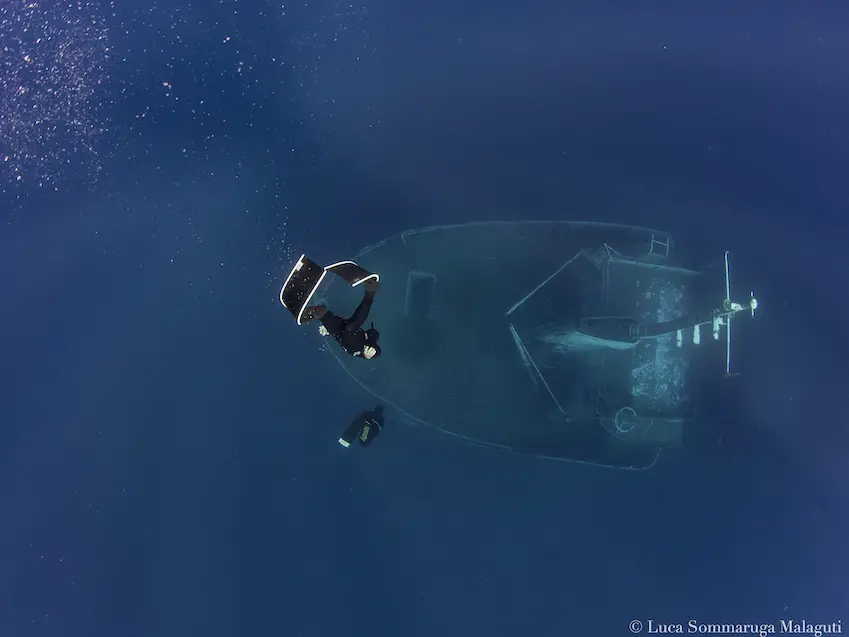
You could spend so much time discovering the sunken shipwrecks on this island. Aside from the famous Zenobia Wreck in Larnaca, there’s dozens of other wrecks and underwater features.
The Zenobia is also known as the “Titanic of the Mediterranean” because of its sheer size. At 172 meters long (565 feet) and lying only at about 45 meters (150 feet) deep, this wreck is perfect for freediving.
Watch Daan Verhoeven and Georgina Miller explore the Zenobia shipwreck.
Stay tuned for our upcoming article and film project about freediving the shipwrecks in Cyprus!
Exploring Mountain Villages
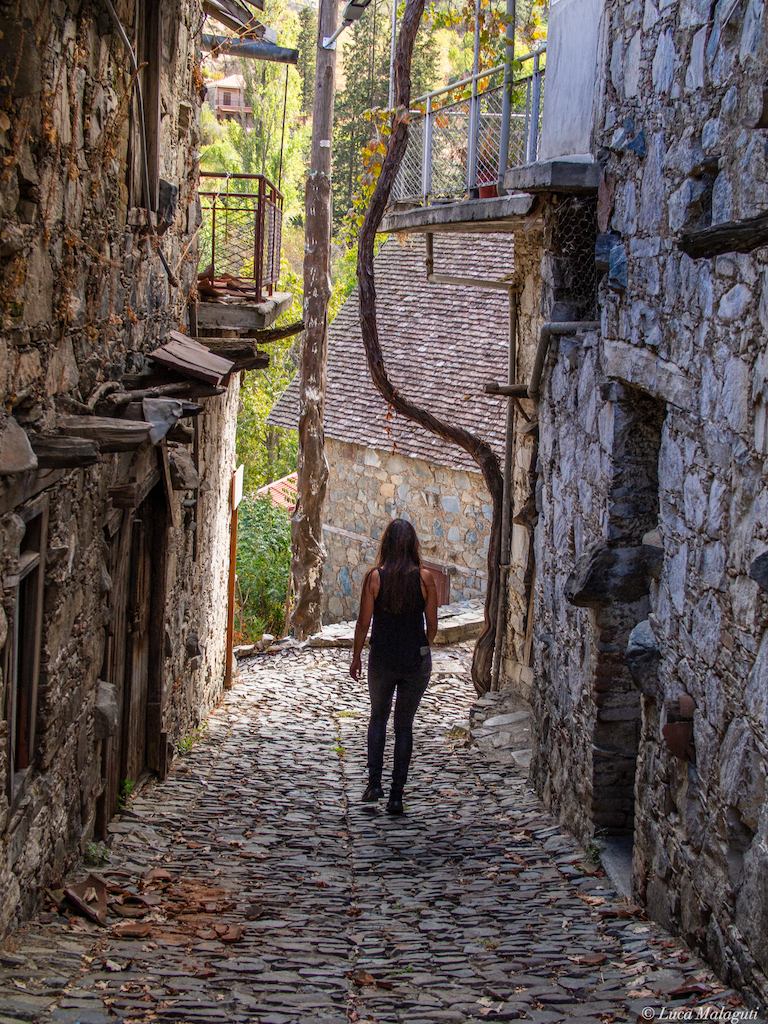
Escape the coastal beauty to explore the endless villages tucked away in the mountains of Cyprus. With an incredibly rich cultural and history, there’s always something unique to find. The local people are very inviting and welcoming to tourists.
Even with a major language barrier, you can still sit down for a Cypriot coffee with a local and share a good laugh. You might just find yourself walking away with a bag of delicious fruits and veggies they grow locally.
Little word of advice: learning a few words in Greek is very useful. Saying “kalimera”, “alispera”, “parakalo” and “efcharisto” to name a few can go a long way.
Follow me on Instagram more pictures of the stunning mountains in Cyprus.
Escaping to Coastal Caves
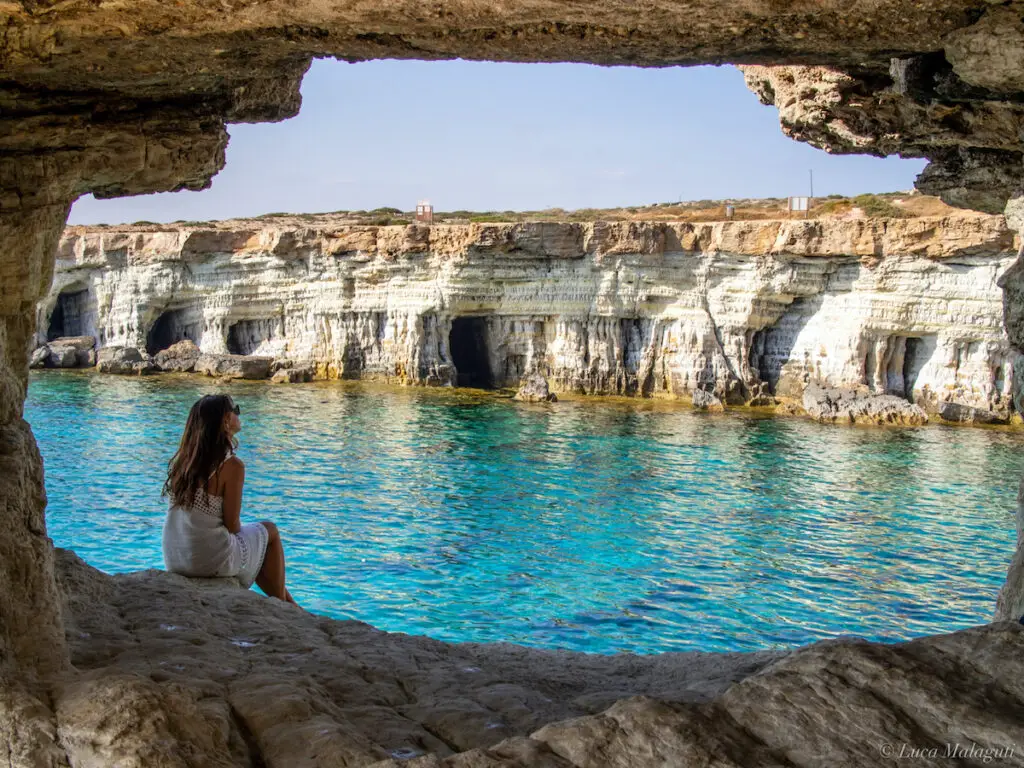
If you’re completely addicted to the ocean, then exploring the coastal caves and beaches in Cyprus should be on your list.
With breath-taking limestone and sandstone formations, the powerful waters of the Mediterranean have sculpted away at these shorelines. Caves, over-hanging features and underwater tunnels to name a few.
The water is simply so blue. Not completely full of marine life since this area is well known for being over-fished, but the occasional turtle will say hello.
